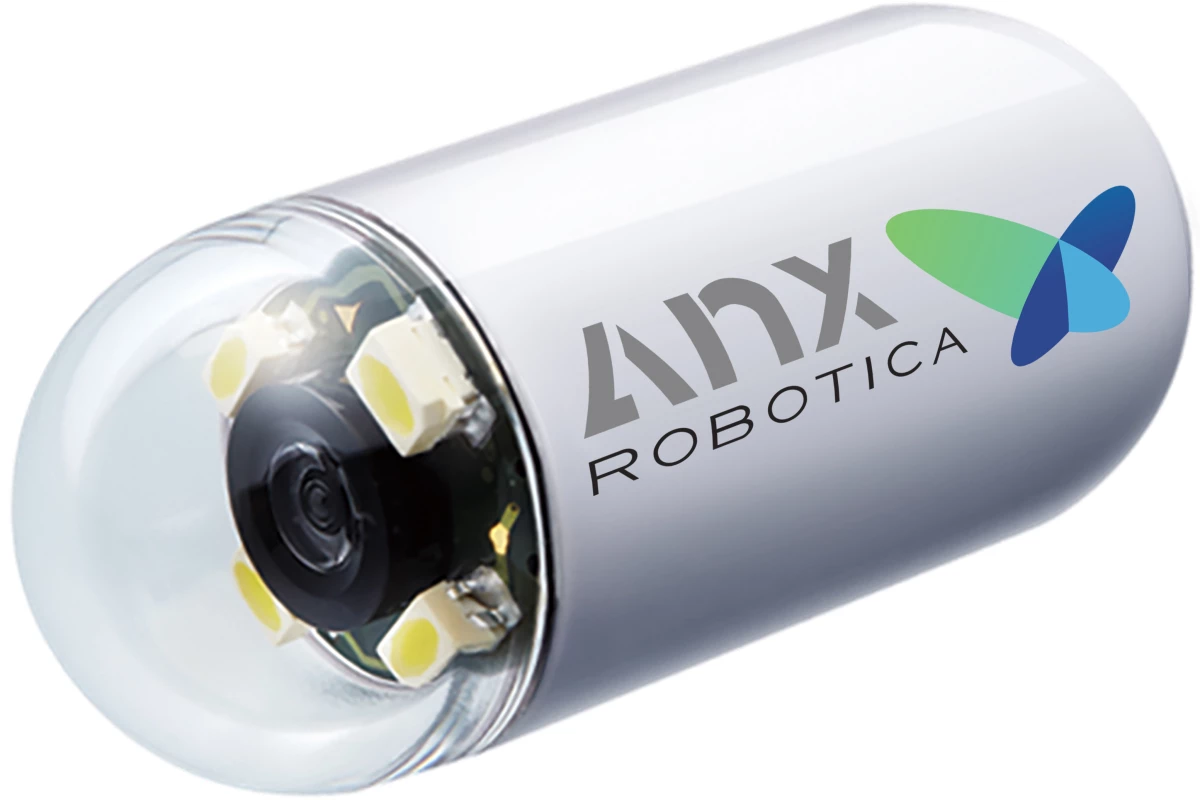Researchers have created a new magnetically controlled capsule that can be ‘driven’ around the stomach using joysticks to take images of areas of interest. It's unlike other pill cams that rely on the gut's natural motility and gravity to get around.
A traditional endoscopy uses a long, thin, flexible tube with a video camera at the end that is passed through the mouth into the upper gastrointestinal tract. The procedure is used to investigate the causes of stomach pain, nausea, bleeding, and weight loss. In the US, more than 7 million endoscopies are performed yearly.
Capsule endoscopy using a ‘pill cam’, where a capsule containing a camera is swallowed and takes images of the digestive tract, is much less invasive than traditional endoscopy and has been used since the early 2000s. However, pill cams are limited in what they can see. They rely on the gut’s natural motility and gravity to move through the gastrointestinal tract and can’t be guided to a specific area of interest in the stomach.
Now, researchers from George Washington University have developed a new type of capsule endoscopy that uses magnets to control the device’s movement through the body. Their study is the first in the US to examine the feasibility of magnetically controlled capsule endoscopy (MCCE) to visualize the human stomach.
“A traditional endoscopy is an invasive procedure for patients, not to mention it is costly due to the need for anesthesia and time off work,” said Andrew Meltzer, lead author of the study.
Meltzer was motivated to create the NaviCam MCCE after treating patients who presented to the emergency room with potentially life-threatening gastric complaints.
“I would have patients who came to the ER with concerns for a bleeding ulcer and, even if they were clinically stable, I would have no way to evaluate them without admitting them to the hospital for an endoscopy,” Meltzer said. “We could not do an endoscopy in the ER and many patients faced unacceptable barriers to getting an outpatient endoscopy, a crucial diagnostic tool to preventing life-threatening hemorrhage.”
The researchers tested the MCCE on 40 adult patients who required an endoscopic procedure as part of a standard evaluation of their symptoms. The patients had to have one or several indications for the procedure, including stomach pain, bloating, heartburn, nausea and/or vomiting, anemia, or weight loss.
Patients were asked to stop eating after 8 pm the night before the procedure. On the day of the procedure, the patient drank four 8-ounce cups (1 L) of water containing simethicone, an anti-foaming agent that reduces gas in the stomach. About 10 minutes after drinking the last cup of water, the patient was asked to swallow the capsule. The patient then lays on a table with a magnet above them, wearing a data-recording vest.

The doctor performing the MCCE controls the capsule using a pair of joysticks, much like those used to play video games. One controls the movement of the capsule in the x-y-z axes, and the other controls rotation along either the horizontal or vertical axis.
The NaviCam, created by AnX Robotica Corp, provides a 160-degree field of view, providing continuous video at a resolution of 640 x 480 pixels per inch with a frame rate of 0.5 to 6 frames per second through a single camera.
The researchers found that the magnetically controlled capsule was able to visualize all anatomical areas of the stomach and record video and still images of any bleeding, inflammation, or malignant lesions with a 95% rate of visualization. The videos can be transmitted off-site for review by a gastroenterologist if there is not one present at the clinic where the procedure is being performed.
Patients underwent a traditional endoscopy after MCCE to compare the results. The researchers found that the new method did not miss any high-risk lesions and 80% of patients preferred the NaviCam to the traditional method.
While doctors using the NaviCam were required to be trained on how to use the joysticks, the researchers are developing software that will use AI to self-drive the capsule to all parts of the stomach and record abnormalities.
The researchers plan to use the NaviCam on a larger sample group to ensure its diagnostic accuracy. They recognize that the downside to MCCE is the inability to take a biopsy of a troublesome lesion, something that traditional endoscopy can do. However, the researchers envision that the NaviCam would be a first-line method of diagnosing gastric problems with biopsies taken by traditional means only when required.
“MCCE in alternative settings such as the emergency department, urgent care, and primary care is conceivably a cost-effective way to evaluate GI [gastrointestinal] symptoms in an outpatient setting,” the researchers said. “MCCE may be especially cost-effective if it reduces hospital admissions, need for anesthesia, and missed work days.”
The study was published in the journal iGIE. In the below video, produced by George Washington University, Andrew Meltzer, lead author of the study, talks about why the magnetically controlled capsule was developed and how it works.
Source: George Washington University






